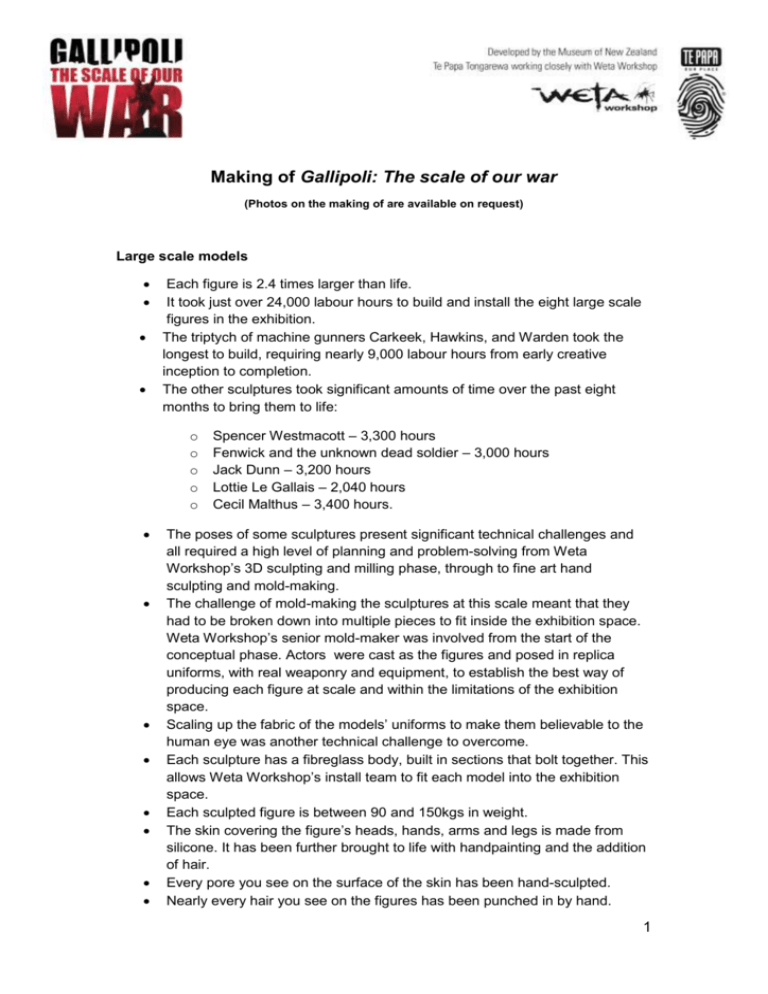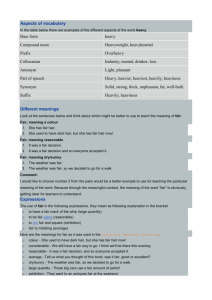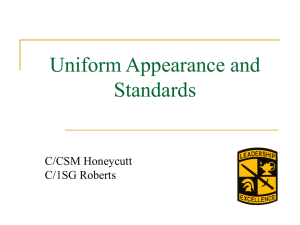The scale of our war
advertisement

Making of Gallipoli: The scale of our war (Photos on the making of are available on request) Large scale models Each figure is 2.4 times larger than life. It took just over 24,000 labour hours to build and install the eight large scale figures in the exhibition. The triptych of machine gunners Carkeek, Hawkins, and Warden took the longest to build, requiring nearly 9,000 labour hours from early creative inception to completion. The other sculptures took significant amounts of time over the past eight months to bring them to life: o o o o o Spencer Westmacott – 3,300 hours Fenwick and the unknown dead soldier – 3,000 hours Jack Dunn – 3,200 hours Lottie Le Gallais – 2,040 hours Cecil Malthus – 3,400 hours. The poses of some sculptures present significant technical challenges and all required a high level of planning and problem-solving from Weta Workshop’s 3D sculpting and milling phase, through to fine art hand sculpting and mold-making. The challenge of mold-making the sculptures at this scale meant that they had to be broken down into multiple pieces to fit inside the exhibition space. Weta Workshop’s senior mold-maker was involved from the start of the conceptual phase. Actors were cast as the figures and posed in replica uniforms, with real weaponry and equipment, to establish the best way of producing each figure at scale and within the limitations of the exhibition space. Scaling up the fabric of the models’ uniforms to make them believable to the human eye was another technical challenge to overcome. Each sculpture has a fibreglass body, built in sections that bolt together. This allows Weta Workshop’s install team to fit each model into the exhibition space. Each sculpted figure is between 90 and 150kgs in weight. The skin covering the figure’s heads, hands, arms and legs is made from silicone. It has been further brought to life with handpainting and the addition of hair. Every pore you see on the surface of the skin has been hand-sculpted. Nearly every hair you see on the figures has been punched in by hand. 1 To produce the large scale models, Weta Workshop has: o Created approximately 150 molds for the sculptures’ bodies alone. o Used approximately 400kgs of silicone to create the skin . Uniforms The uniforms were pattern made from both original and other replica 1:1 scale uniforms and then scaled up to be 2.4 times larger. A mixture of materials matched to the original uniforms were used to produce them, including wools, cottons, hessian, metal, leather acrylic and urethane. The combined weight of the sculptures’ uniforms is over half a tonne! Hair/eyelashes/eyebrows Each weft of hair weighs about 110 grams. Each head used somewhere between 4 and 8 wefts. So there’s anywhere between 500gms and 1kg of hair on each head! Human hair was used on the top of the heads. Facial hair is a mix of human, horse mane, horse tail and yak tail hair. All hair is a blend of three or four colours (including the stubble) to give the hair the depth and reflection of natural hair. Eyebrows are made of human, goat, and yak hair. Eyelashes are synthetic. Two tapered hairs have been glued together by hand to make them thicker. Peach fuzz on the surface of the skin and hair is mohair and each hair has been individually punched in. Nose hair is made of yak hair. Body hair is human. Each head of hair took between three and six weeks to install, depending on the nature of the model’s hairstyle. Eyebrows took two days per brow, with each individual hair punched in by hand. Fenwick's moustache took four days to create and the facial stubble on all the faces took approximately six days. Weta Workshop had a team of seven people devoted to punching in the hair on the models. Fenwick has one of the largest toupees Weta Workshop has ever made. The top section of his hair is removable so that the top of his head is accessible. The toupee has a hand knotted crown and sewn on weft. The hair below the toupee is hand punched. 2 Plinths Each large scale model stands on a plinth. The plinth is hand carved in polystyrene and hard-coated in a surface of urethane hard-coat with a mixture of sand. Real rocks and stones have been mixed in before greenery and paint are applied. Each plinth is made to break down into multiple sections to fit into the confines of the exhibition space. Each sculpture is fitted with a structural steel armature bolting it to the floor through the plinth. The armature was designed by Holmes Consulting Group. 3









